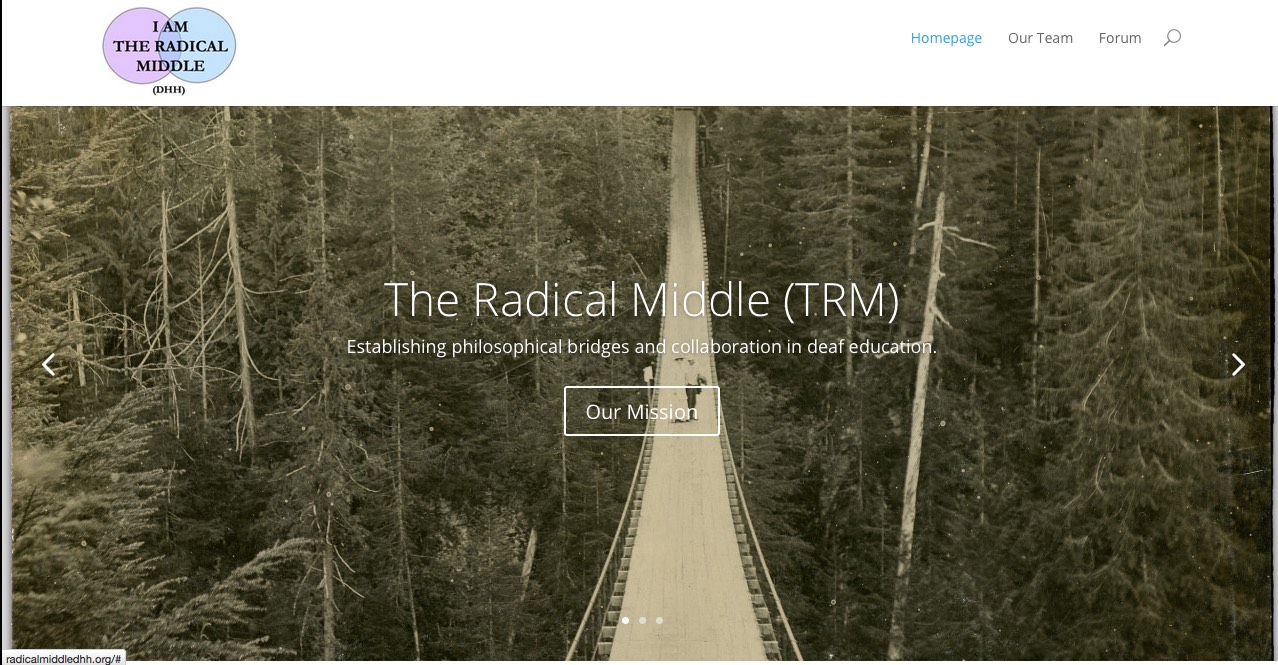St. Augustine, FL — Some children who are deaf or hard of hearing learn best through hearing aids and speech therapy. Others rely on sign language. Everyone learns differently.
That’s the message that Maiorana-Basas strives to tell the world.
She is a professor of deaf education at Flagler College and co-founder of The Radical Middle, an online discussion forum for anyone who wants to better understand some of the finer points of deaf education. For decades, people who are part of the deaf community have fought over and debated whether cochlear implants are a reasonable solution for those who have trouble hearing.
Cochlear implant, electronic hearing devices that are implanted in the brain, have been controversial. Some people have worried they may risk a patient’s life or permanently impair his or her hearing. But they say the risk is worth it if the implants allow someone to hear. In short: “Being deaf is terrible and worth dying over.”
So for decades, a great divide developed. On one side: People who believe that being deaf means only learning to sign. On the other side: Implant enthusiasts who believe the cochlear implant will only improve a child’s lifestyle because it allows them to be a part of the hearing world, the so-called “normal” society.
Basas found a solution to the dilemma. There is no great divide, she says, when it comes to children. Children in general are born with different learning skills and this concept must be applied also to those who are deaf or hard of hearing.
“I can’t imagine it’s easy to come from this one end where you’re so rooted and supportive and you believe in it so much to say ‘OK, I have to meet these people halfway’ is terrifying,” Basas said. “Especially when there’s such an opposition between both groups..The entire deaf community could shun me for saying that I’m OK doing whatever it takes and I’m talking to the cochlear implant people. That could totally ruin me…but this isn’t about me.”
To learn more about Dr. Basas’ journey to the middle, see her interview below.
https://www.youtube.com/watch?v=rBPmJEyTFfM
During her time as a deaf education professor as well as an activist, Basas has met with and debated radicals from both ends. One particular extremist would be Jonathan Henner, a professor at College of the Holy Cross in Worcester, Massachusetts. He is deaf and describes himself as a “bilingual bicultural education” supporter.
Henner believes the only thing the deaf community needs to communicate is sign language. In his experience, people often mistake deaf for being a problem that needs to be fixed. As he sees it, sign language is just another language, like Spanish or English.
“I am oft accosted by people in public for the crime of being deaf when there is clearly a cure out there in the world,” Henner says. “People have no social barriers for telling me that I ought to get over this deaf thing and be implanted so that I can be hearing like everyone else.”
There is a common misconception with cochlear implants, or CIs, that they are an “cure-all” and therefore should be the first plan of attack when it comes to handling deaf children, Henner and others say. This is due to a lack of understanding, especially among people who have had little or no contact with those who are deaf or hard of hearing.
CI surgery can be dangerous and in rare instances can threaten either the hearing or the life of the patient. Henner says, “People are so afraid of disability and deafness that they’ll do anything to help their children. One couple had their daughter undergo a very dangerous brain-stem implantation procedure, at risk to their daughter’s life. Because being…in the deaf world and in sign language was so much more scary than death.”
When trying to help deaf children function in society, some teachers, deaf professionals and parents often resort to the cochlear implant. Or they decide that speech therapy and sign language is best for their child.
The Radical Middle’s goal is to have a conversation among the adults about the virtue of using a combination of solutions, including implants, speech therapy and sign language, depending on the child’s needs.
Basas says she also wants to build a bridge between the two worlds so that children growing up in the non-hearing community are not being led to believe that they have to be segregated or pick a side. In the words of deaf 24-year-old Jordan Shea, “It’s much like racism.”
Shea is the perfect example of one who is “straddling both worlds.” At the age of 2, doctors said he would be deaf for the rest 0f his life. Shea’s parents did everything in their power to make sure their son was prepared for anything the world had to offer and open as many doors as possible, which included a hearing aid, speech therapy and sign language classes.
“I’ve always been part of the deaf world and the hearing world,” Shea says.
He describes his social life as challenging because of a lack of acceptance and understanding from both sides of the spectrum.
He does not regret what his parents did for him and he doesn’t believe he should be punished for being able to hear. Because Shea got the right amount of help and education at such a young age, he says, he has been able to do many things that he may not have been able to do had his parents taken another route.
“My dad always pushed me to be the best version of myself, and that’s what got me where I am today,” Shea said.
To hear his story, see the video below.
https://www.youtube.com/watch?v=3_MbOBuQkcU




Be the first to comment on "Straddling two worlds"